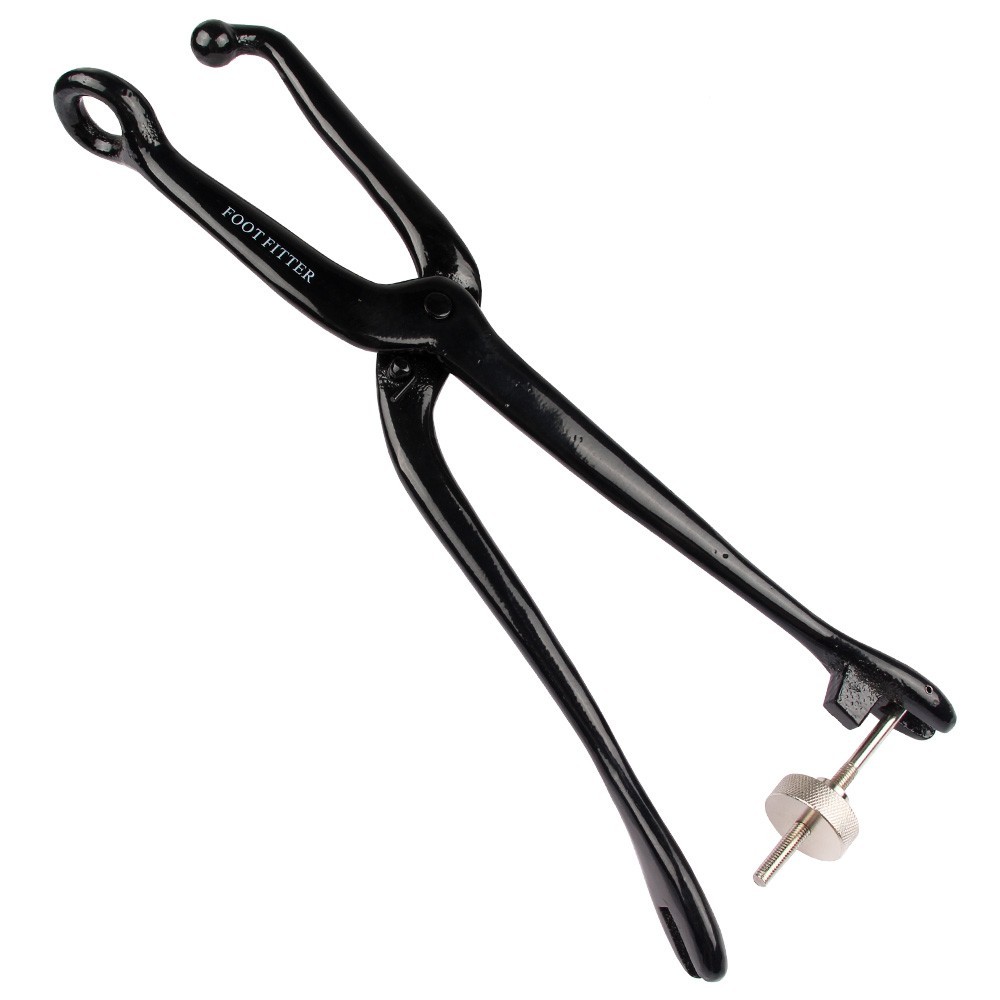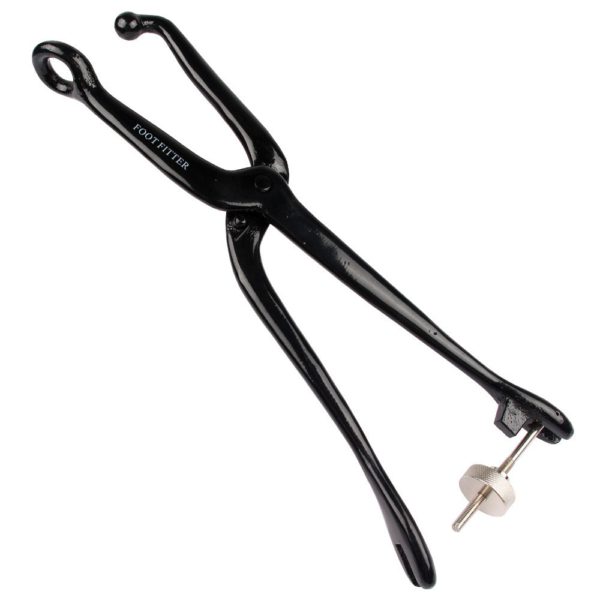
It looks like a medieval torture device, but if you’ve ever felt your shoes were just a little too tight in one spot, this may be your best solution. A few months ago, a friend told me about a cast iron shoe stretcher he bought from FootFitter. He was elated at how well they worked on a pair of English-made derbys he’s owned for years. They’re beautiful shoes, but since they don’t fit that well in just one corner – something he only notices after a few hours of wear – he’s come to never really wear them that much (until now).
This cast iron stretcher is different from the more common wood varieties you may have seen strewn around your local cobbler’s shop. Whereas those are designed to stretch large areas of a shoe – say, around the vamp – this is made for spot treatments. It’s designed for guys who have bunions, or maybe just need a little extra room on the outside corner of their shoes. Which, from what I’ve seen on message boards, seems to be the most common complaint.
The device is simple. You clamp it down around the area you need stretched, then secure it using the lock on the other side. Leave it overnight and you’ll have a better fitting pair of shoes the next day. This video shows a demonstration.
Nicholas Templeman, a bespoke shoemaker, tells me he’s used devices like this when he worked as a last maker at John Lobb (the bespoke shoemaking company in London, not the Hermes-owned brand that produces ready-to-wear footwear in Northampton). If a customer got a pair of shoes and felt they were too tight in one area, the company would take them back and adjust the spot with a bunion stretcher. The key, he says, is to put a thin piece of leather or maybe a cut-up piece of cloth (say, from a t-shirt) on the ball-and-ring side, so you don’t leave marks on the leather. If you find the stretched out area leaves a “bubble,” just even it out by stretching the surrounding area a bit more softly. Think of it like shading in something on a drawing.
The one caveat: don’t try use this on the heel or, if you can reach it, toe box. Those are typically made with internal plastic stiffeners, and you’ll crack them if you try to stretch them out. You’ll know if there’s a plastic stiffener there because you’ll be able to feel it. The area won’t bend like, say, the sides of your shoes.
You can find FootFitter’s stretcher on their website and Amazon (the second is on sale right now with free shipping, while FootFitter’s site may charge you a delivery fee depending on how much you spend). As always, you can also find cheaper alternatives on eBay by searching for the term “bunion stretcher.” Just be careful of the ones without that locking device at the end. You may end up having to find some other way to secure it if you want to leave it overnight.
